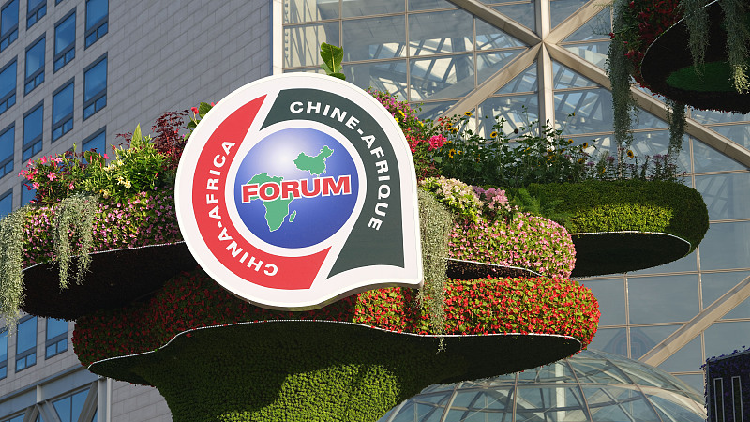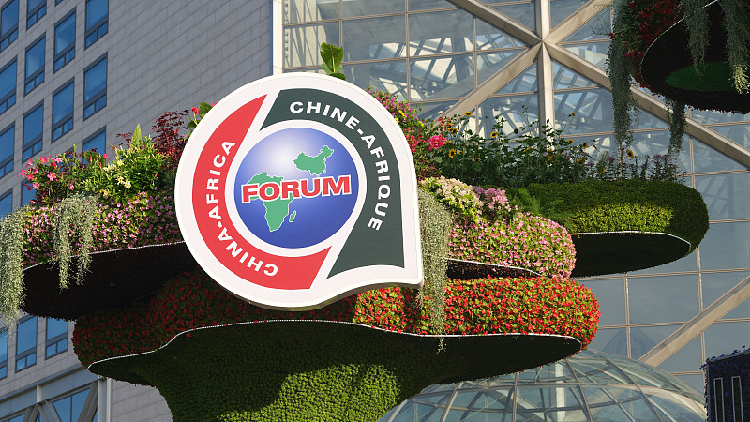FOCAC 9 and its role in South-South cooperation in the 21st century


<img src='https://news.cgtn.com/news/2024-08-28/FOCAC-9-and-its-role-in-South-South-cooperation-in-the-21st-century-1wr2cyNoZlC/img/96b541be5f8e4b4e9f1976d82a8b6b08/96b541be5f8e4b4e9f1976d82a8b6b08.png' alt='Flower decorations set up along Chang'an Avenue for the upcoming 2024 Summit of the Forum on China-Africa Cooperation in Beijing, China, August 28, 2024. /CFP'
Editor’s note: The 2024 summit of the Forum on China-Africa Cooperation (FOCAC) will be held in the Chinese capital city of Beijing from September 4 to 6, with the goal of enhancing the progress of China-Africa cooperation. CGTN invited Zha Daojiong, a professor in the School of International Studies and Director of the Research Institute of South-South Cooperation and Development at Peking University, to share his opinion on FOCAC 9 and its role in South-South cooperation in the 21st century. The article reflects the author’s opinion and not necessarily those of CGTN.
The ninth edition of the FOCAC summit, to take place from September 4 to 6, returns to its inaugural city, Beijing. The summit series has come a long way, having rotated between Beijing and Addis Ababa (2003), Sharm el-Sheikh (2009), Johannesburg (2015), and Dakar (2021). The 2024 FOCAC summit is thus both a confirmation of value in summitry between its participants and a demonstration of commitment for maintaining the momentum of government-initiated cooperation to promote economic development.
During the quarter of a century since FOCAC’s inauguration in October 2000, basic tenets undergirding interactions between governments, societies, and peoples of the world have gone through profound changes. Economic growth through efficiency-driven utilization of resources and promotion of industrialization in developing countries and trade with them has fallen out of fashion. In its place, more and more high-income governments adopted the notion of economic security in relation to those in middle-and-low-income levels of development. This often results in policies that leave steeper ladders for middle- and low-income economies to climb.
This makes it fitting to view the ninth FOCAC as a manifestation of the value of South-South Cooperation (SSC) in the 21st century.
The core feature of SSC is pursuit of cooperation “by the South and for the South.” What began as a demonstration of political and diplomatic solidarity in the 1950s, which led to the United Nations (UN) declaration on the establishment of a new international economic order in 1974, waned in the 1980s, in part due to the shift from North-South dialogue to neoliberalism as the prevailing doctrine of global development governance.
But the spirit of SSC survived. For example, the South Commission (1987-1990), under the leadership of Julius Nyerere, then president of Tanzania, worked to keep highlighting systematic challenges for the South and succeeded in having its reports included in the United Nations general assembly documents. Creation of the inter-governmental South Center, in July 1995, is a marker of the renaissance of the movement, if only with a change from political solidarity to valuing the South as source of intellectual wisdom and policy support.
With the United Nations moving to establish the Office for South-South Cooperation in 2013, centering on addressing development challenges in middle-and low-income economies received broad recognition. Although SSC had been in the portfolio of the UN system dating back to the beginning of the United Nations Development Program (UNDP) in 1965, it was a treated as work of a special unit only. Suffice to note that under the UNDP, SSC cooperation projects evolved as spur from North-South cooperation and dialogue. China was active in the UNDP’s promotion of trilateral development cooperation projects, including those implemented in China itself.
<img src='https://news.cgtn.com/news/2024-08-28/FOCAC-9-and-its-role-in-South-South-cooperation-in-the-21st-century-1wr2cyNoZlC/img/9785fdf70bad4490bc0cd0109469c7fd/9785fdf70bad4490bc0cd0109469c7fd.jpeg' alt='A freight train on the Chinese-built Mombasa-Nairobi Railway track in Mombasa, Kenya, May 30, 2017. /CFP'
On September 26, 2015, President Xi Jinping and the Secretary-General of the United Nations, Ban Ki-moon, jointly hosted the high-level roundtable on SSC. The larger background of the event was movement from the Millennium Development Goals to the 2023 Agenda for Sustainable Development.
It must be noted that African countries were from the start a major force of SSC, including with China as a core participant. Development, a common human aspiration, is what brought China and Africa into institutionalized contact, dating back to the 1950s. As a matter of fact, the China-funded Tanzania-Zambia Railway, whose operation commenced in 1976, was singularly the most tangible manifestation of friendship and cooperation between Africa and China during those decades.
Africa embraced trade and investment outreach by Japan, with the establishment of the Tokyo International Conference on African Development (TICAD) in 1993. As a matter of fact, TICAD served as an inspiration for FOCAC. In addition, over the past two decades, the African Union has entered into institutionalized development partnerships with Brazil, India and Türkiye, among others.
As summarized in a UNDP report, among African countries themselves, SSC flourished, enhancing collaboration, integration and intra-African partnerships towards the 2030 and 2063 agendas. Either through the UN system or through such mini-lateral groupings as the Group of Seven (G7), Africa has sought opportunities for harnessing resources and ideational input to address development challenges on the continent.
The establishment of the Lobito Corridor project comes to mind as a good example of space for external commitment to long-term growth on the continent. The corridor has been in place for over a decade, with investment from both Europe and China. Upgrading and expanding the existing railway system brings about benefits to economies of the line services, in addition to serving the needs for green energy transition in the rest of the world. An ideal development is for the Benguella railway and the Tazara railway to be connected to serve as a transportation link between the Indian and Atlantic oceans.
The sketch above is far from doing justice to the proliferation of Africa-centered international cooperation projects, whether or not they are framed as SSC. My purpose here is to remind observers of the ninth FOCAC in particular and China-Africa cooperation in general of utility in keeping in mind African agency and power in affecting input, material and ideation to the African continent.
As such, one way to view the significance of the ninth FOCAC is not so much what China can do for Africa, certainly not solely through a pledged amount of investment or increase in trade. Rather, it is more useful to treat the summit as an affirmation of commitment to the development philosophy that the essence of governance is the betterment of the livelihood of people. Ideas and projects that can be categorized as South-South Cooperation in the 21st century must be made to be fit for the purpose of development needs in both China, Africa and the rest of the Global South.
It is as important to note that, more so than in the past, for South-South Cooperation in the 21st century to retain its relevance and vitality, there can be no one-size-fits-all in philosophizing and/or project design and execution. Instead, devotion to mutual learning and collaborative exploration, including that with skeptics and even critics of China-Africa engagement, is essential. African countries and China continue to go through a learning by doing process in development cooperation. Such is the spirit and value of the ninth FOCAC.





